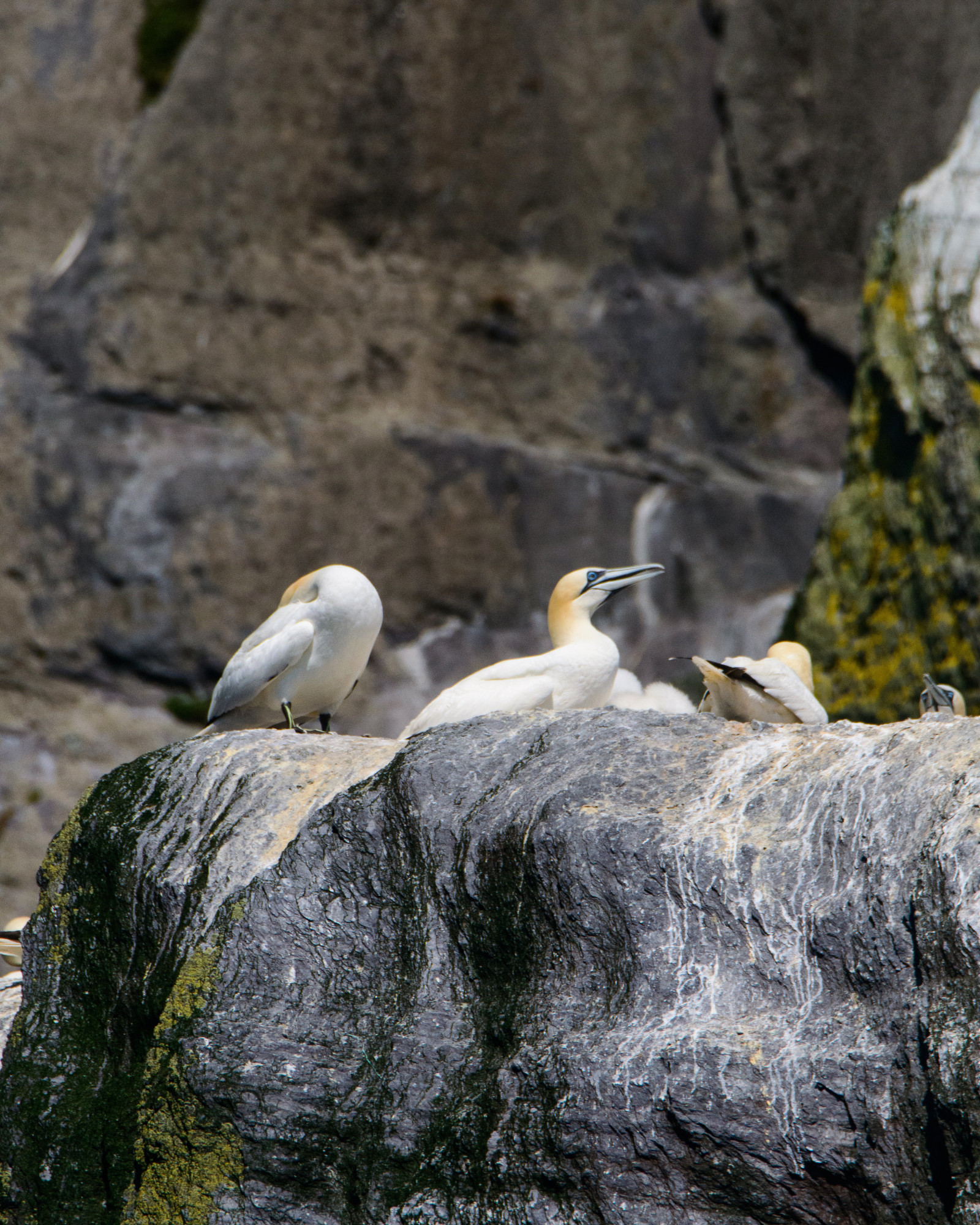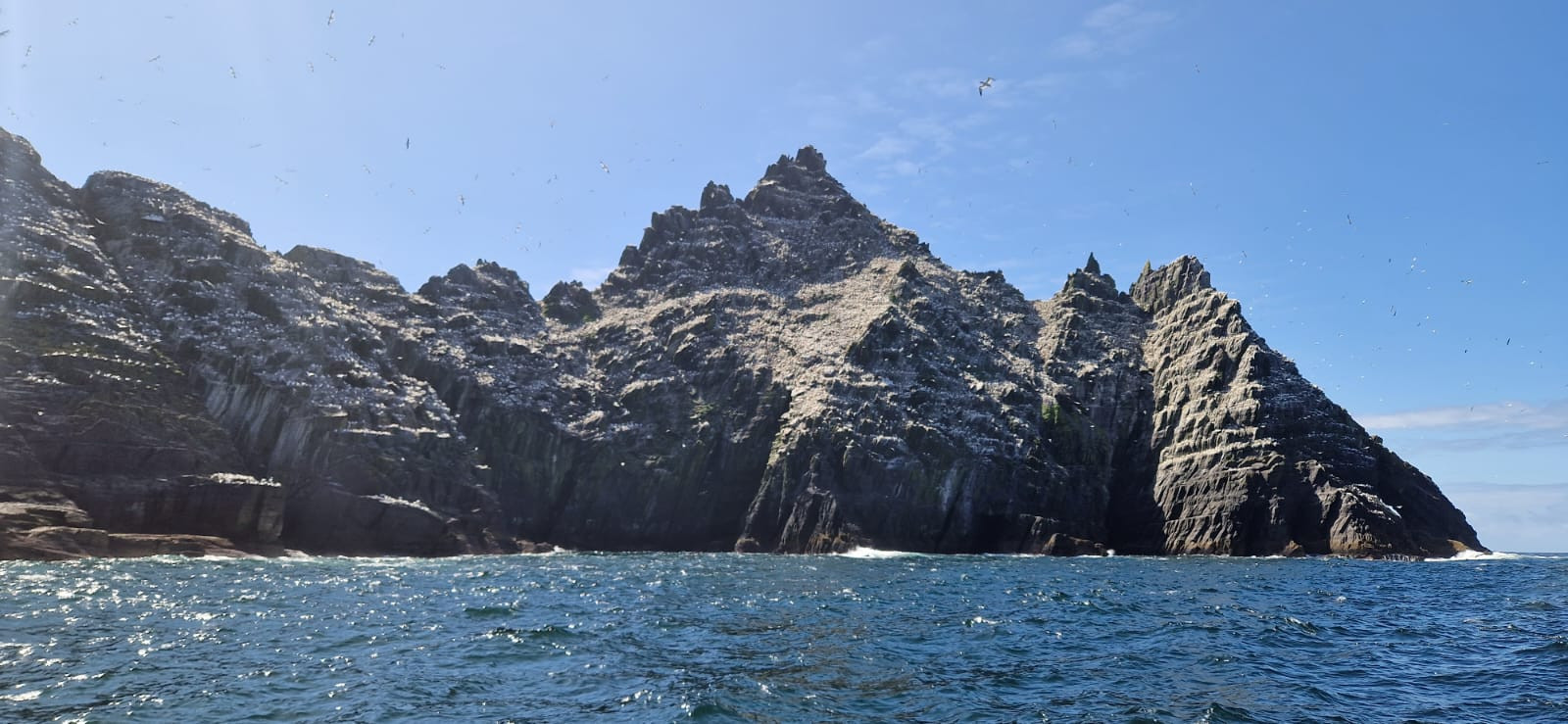Descrizione
The Skellig Islands are two small, steep, and rocky islands lying about 13 km west of Bolus Head on the Iveragh Peninsula. The larger of the two is Skellig Michael which, together with Little Skellig, is at the centre of a 364-hectare Important Bird Area established by BirdWatch Ireland in 2000. The smaller of the two islands is Little Skellig. It is Ireland's largest Sula colony with almost 30,000 pairs. Little Skellig is closed to the public, but it is possible to circle the island by boat. Skellig Michael can be visited on foot.
Both of the Skellig islands are known for their seabird colonies, and together compose one of the most important seabird sites in Ireland. Among the breeding birds are Uccello delle tempeste, Fulmaro, Sula, Berta minore atlantica, Gabbiano tridattilo, Uria, Gazza marina and Pulcinella di mare (with 4,000 or more puffins on Skellig Michael alone). Uria nera, Gracchio corallino and Spioncello marino can also be seen.
The Pulcinella di mare arrive on the island in late spring and Sula start to arrive on the small Skelligs in March. By April, they have covered every available ledge on the island.
Dettagli
Accesso
Boats tours leave from Valentia Island. The 'Skellig Michael Boat Tour' (from € 42 pp) around the Skellig Islands (Skellig Michael and Little Skelligs Nature Reserve) has multiple departure times throughout the day. The boat tour lasts approximately 2 hours and 25 minutes and circles both islands. On the 'Skellig Michael Landing Tour' (from € 115 pp) you get off the boat and step on to the island of Skellig Michael. The Skellig Boat Tour season runs from April to end September. See for prices, schedule and tickets the links below.






